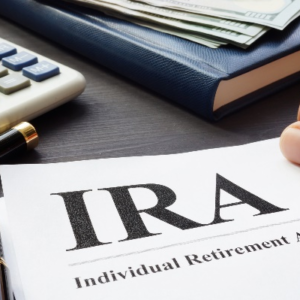 According to the Internal Revenue Service, IRA stands for Individual Retirement Arrangements (IRAs).1
According to the Internal Revenue Service, IRA stands for Individual Retirement Arrangements (IRAs).1
Let’s break it down from there.
First (and foremost) they are owned by individuals. They are not owned by couples, and they are not usually provided by employers. Each person can have as many IRAs as make sense for them. The individual is responsible for investing in almost any publicly available investments, including conservative bank accounts, mutual funds, individual stocks or bonds, and many more complicated investments like annuities, REITs, and more.
Next comes Retirement. These accounts are designed to accumulate and distribute assets for the individual when they leave the workforce. To encourage their use, the government provides a variety of tax benefits depending on the type of IRA.
Finally comes Arrangement. Often this last word is changed to Account, but some of the investment choices might be contracts rather than accounts, so “arrangement” makes more sense. More important, there are many different types of IRAs, but the three that most individuals open for themselves are called traditional, Roth, and Rollover.
Traditional IRAs provide a tax deduction when the owner makes the contribution2.
Roth IRAs don’t give a deduction, but there is never a tax on qualified distributions[ A Roth IRA offers tax deferral on any earnings in the account. Qualified withdrawals of earnings from the account are tax-free. Withdrawals of earnings prior to age 59 ½ or prior to the account being opened for 5 years, whichever is later, may result in a 10% IRS penalty tax. Limitations and restrictions may apply.], often taken later in life.
Rollover IRAs are used when money is moved from other tax-deferred accounts, like 401k, 403b, or 457 plans. Oh, those three numbers apply to employees of private business, education or non-profit organizations, or governments, respectively.
IRAs the individual cannot create without someone else’s involvement include SEP and SIMPLE plans created by an employer, usually a small mom and pop business. Inherited IRAs have very tricky rules but allow a beneficiary to continue deferring taxation following the owner’s death.
The contribution and distribution rules are a bit complex, and come with some significantly threating penalties if violated, so it’s good to talk with a professional to review your specific situation.
I know a guy.
Ralph Bender is a registered representative with, and securities offered through LPL Financial, Member FINRA/SIPC.
1https://www.irs.gov/retirement-plans/individual-retirement-arrangements-iras Contributions to a traditional IRA may be tax deductible in the contribution year, with current income tax due at withdrawal. Withdrawals prior to age 59 ½ may result in a 10% IRS penalty tax in addition to current income tax.
2A Roth IRA offers tax deferral on any earnings in the account. Qualified withdrawals of earnings from the account are tax-free. Withdrawals of earnings prior to age 59 ½ or prior to the account being opened for 5 years, whichever is later, may result in a 10% IRS penalty tax. Limitations and restrictions may apply.
TRACKING # 35616-1
